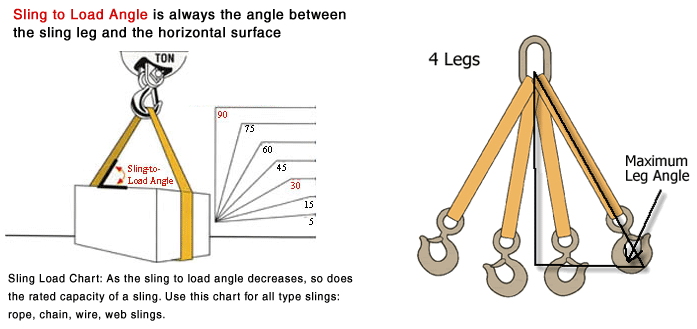My Cart
You have no items in your shopping cart.
To calculate lifting capacity, first identify your material type and consider the rated lifting capacity required. The rated lifting capacity of the sling must often be greater than the weight of the load to be lifted. Because the angle of pull on the leg of a sling varies with the leg angle, forces may be exerted on a sling greater than the user may expect.
Need a New Nylon Sling? Browse Hoist Central’s inventory
To calculate the load on a sling leg and the associated lifting capacity:
For example: Assume a 2,000 pound load is to be supported by 2 legs of a sling at a 60° leg angle.
In this example, the rated sling capacity needed is 2,308 pounds (1,154x2 legs) in basket capacity to safely lift the 2,000 pound load.

| Leg Angle | Load Factor |
| 90° | 1.000 |
| 85° | 1.003 |
| 80° | 1.015 |
| 75° | 1.035 |
| 70° | 1.064 |
| 65° | 1.103 |
| 60° | 1.154 |
| 55° | 1.220 |
| 50° | 1.305 |
| 45° | 1.414 |
| 40° | 1.555 |
| 35° | 1.743 |
| 30° | 2.000 |